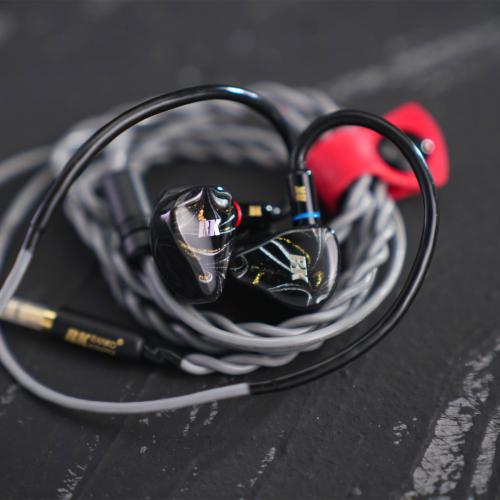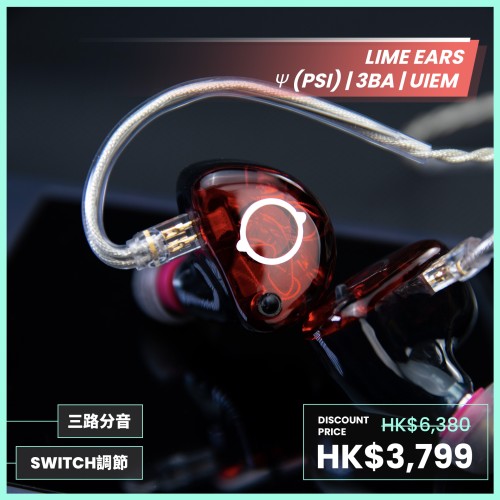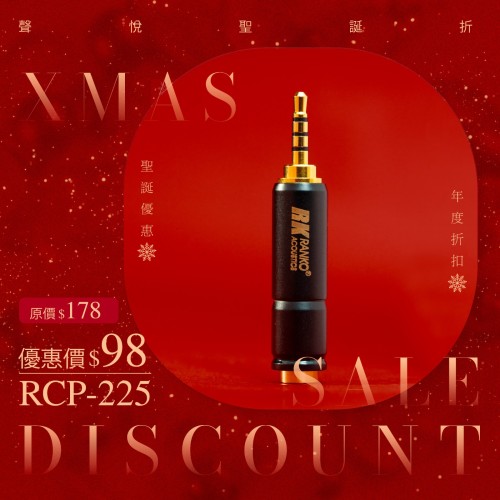13 Feb


0 Comment(s)
3622 View(s)
The difference in performance between the "3S" and the "2S" is quite noticeable, but since the previous generation "2S" was not released in Taiwan, comparing them becomes meaningless. Therefore, let's compare the differences between the "3S" and the "3PLUS" under 4.4mm, and also remind "3PLUS" users that there is a new firmware available for upgrade, please pay attention to the official "audirect" Facebook page.
Under the same volume and track, the most noticeable differences in "high gain" are: sound positioning, extended details, and cohesion. The tonal temperature is similar, warm and transparent. However, I don't know if readers have noticed the keyword "high gain"?
In the past, I mostly did not recommend using high gain on in-ear headphones with an impedance below 32 ohms on portable DACs, due to over-driving phenomenon. It would cause variations in the positioning of the entire soundstage, with some sounds becoming too close, while others seem distant or left/right. But the biggest problem is that the sound becomes thin, lacking in energy, giving a sense of abruptness and dryness. Therefore, for friends with devices that have multiple gain settings, you can try listening and comparing the differences in sound.
However, everyone has different headphones, front-end equipment, and devices, so it doesn't necessarily mean that using high gain on low-impedance headphones will always result in over-driving. The differences between the three settings may also be subtle. It mainly depends on whether the overall listening experience is satisfactory. So, let me talk about the shortcomings of using high gain on the "3PLUS" with 4.4mm balanced output.
Using high gain on the "3PLUS" shifts the positioning of vocals and low-frequency rhythm points closer. Each note's energy distribution shows a greater difference, meaning there is a volume gap. Smaller accompaniments are easily overshadowed by louder instruments, and originally distant background accompaniments move closer. Fortunately, the cohesion is slightly relaxed, although it moves closer, if it's not listening to highly complex music, some overlapping sensation can be harmonious and create a sense of surrounding density, which also adds a unique flavor. However, in rock music, this overlapping sensation has a negative impact. Simply put, it feels clumped together, which is different from listening to high-pressure sound. In this case, it means that the instruments seem to be mixed together rather than forcefully pressing against the eardrums.
This is related to the inherent structure of the "3PLUS". The "3PLUS" has Bluetooth, 3.5mm stereo output, and 4.4mm balanced output, and the cost consideration of supporting multiple ports creates a difference in information between the "3PLUS" and the single 4.4mm balanced output of the "3S". You can also interpret it as "the simpler, the purer", and it gives a more comprehensive presentation.
Using high gain on the "3S" brings vocals and low-frequency rhythm points slightly closer (e.g., "音闕詩聽 Interesting & Wang Zi Yu - Hong Zhao Yuan (High-Res Version)"), but compared to the "3PLUS", it takes a small step back. However, the form is more cohesive, and the ending is more distinct. The bass strikes create ripples and a sense of sinking. The extension and movement of each accompaniment line are more pronounced, stimulating the performance of the multi-driver earphones, making it more magnificent.
Furthermore, due to the more orderly vertical soundstage arrangement (the "3PLUS" in high gain mode will concentrate on the same row) and the presentation of more details in instruments, it is clearer. These details are like the difference between 720P and 1080P in video quality. Depending on the complexity of the music, the overall resolution perception of the "3S" actually surpasses the "3PLUS". Additionally, readers should not forget that I mentioned earlier that the "3S" and "3PLUS" have similar tonal characteristics. Therefore, the "3S" still has a warm and transparent signature with a slightly rich tonality. As a result, the background is not dark or quiet, meaning that it is different from the KUANG PAI Plus2+. This also weakens the brightness of metallic instruments, affecting the crispness. However, everyone has different preferences when it comes to sound, and what matters most is your personal taste rather than performance.
But if you happen to like the warm and smooth tonality, then the "3S" is perfect for you. For example, for anime music with high vocal brightness ("Ho-Kago Tea Time - NO, Thank You!"), the "3S" harmonizes appropriately and maintains its splendor under high resolution, making it more enjoyable to listen to. And of course, it's also suitable for Mandarin pop music, especially ancient-style music, which can be quite moving!"
--------------- Click here for detailed post (originally in Chinese) ---------------



















-500x500w.jpeg)




































Leave a Comment